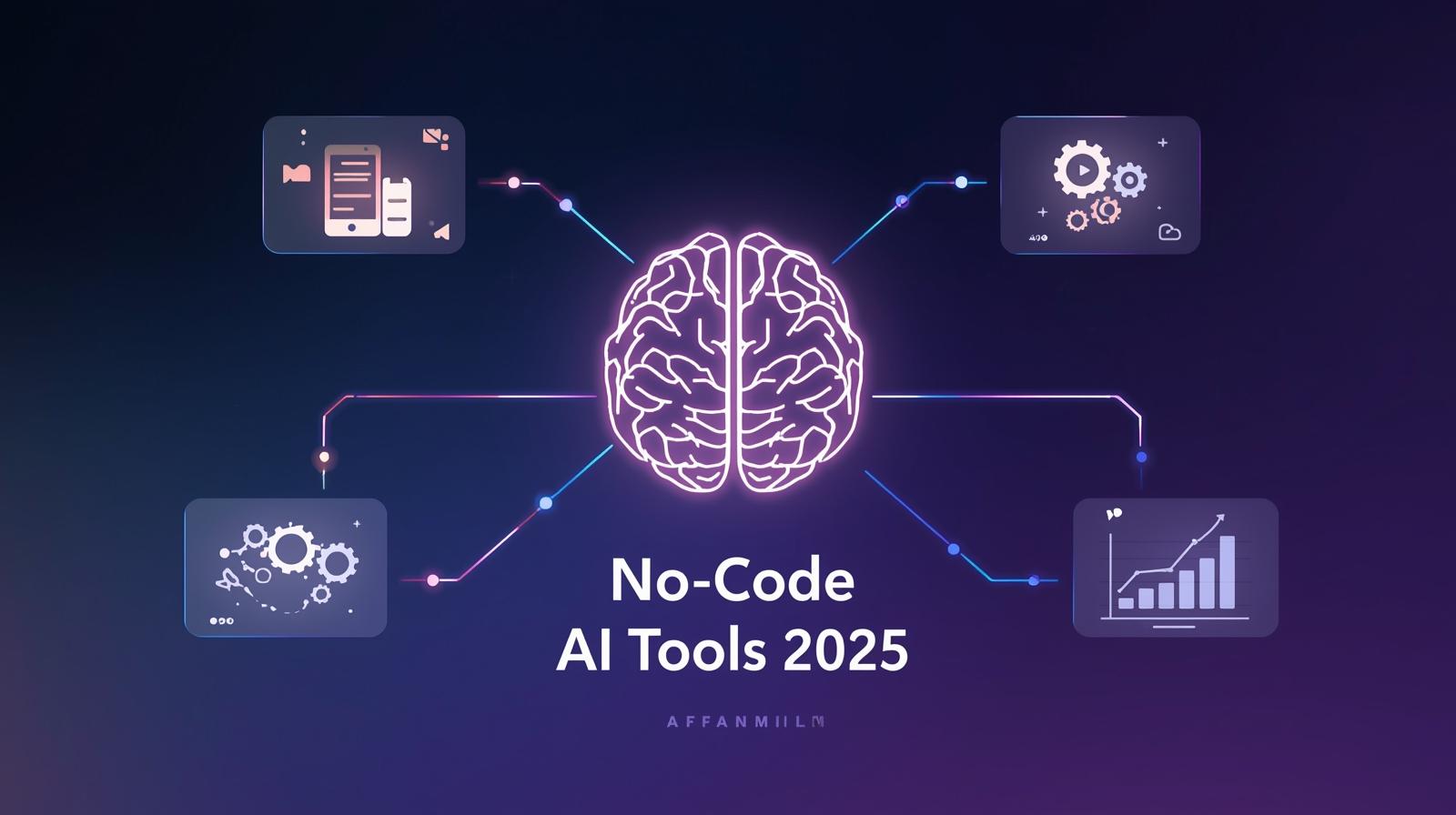No-code AI tools are platforms that provide intuitive visual interfaces, drag-and-drop functionality, and pre-built templates to harness AI capabilities. These solutions eliminate the technical barriers that traditionally prevented non-programmers from leveraging machine learning, natural language processing, and computer vision technologies.
The beauty of no-code AI tools lies in their accessibility. Entrepreneurs can prototype business applications in hours rather than months. Marketers can automate personalized campaigns without bothering IT departments. Content creators can generate images, videos, and text with simple prompts.
Top Categories of No-Code AI Tools in 2025
AI App Builders
Platforms like Bubble, FlutterFlow, and Adalo now integrate AI capabilities directly into their visual development environments. Users can add chatbots, recommendation engines, and predictive analytics to their applications by simply selecting components and configuring parameters. These no-code AI tools make it possible to launch AI-powered startups without hiring expensive developers.
If you’re interested in learning app development, these platforms offer extensive tutorials and community support to help you get started.
Workflow Automation
Tools such as Zapier, Make (formerly Integromat), and n8n have evolved to include AI nodes that can process documents, analyze sentiment, extract data, and make intelligent decisions. By connecting different apps through visual workflows, users can create sophisticated automation that responds dynamically to changing conditions.
According to recent automation trends, businesses using these tools report up to 40% time savings on repetitive tasks.
Content Generation
The explosion of generative AI has spawned numerous no-code AI tools for creating content. Platforms like Canva Magic Studio, Runway ML, and Descript enable users to generate images, edit videos, clone voices, and produce marketing materials through simple interfaces. What once required teams of designers and editors can now be accomplished by individuals in minutes.
These tools are part of the broader generative AI revolution transforming creative industries.
AI-Powered Analytics
Business intelligence platforms have embraced natural language querying, allowing users to ask questions in plain English and receive insights without understanding SQL or complex data structures. These no-code AI tools transform raw data into actionable intelligence accessible to everyone in an organization.
For deeper insights, explore our guide on data-driven decision making.
Why No-Code AI Tools Are Gaining Momentum
The rapid adoption of no-code AI tools stems from several converging trends. First, AI models have become more powerful and user-friendly, with better accuracy and more intuitive interfaces. Second, the shortage of technical talent has forced companies to seek alternatives that empower existing teams. Third, the speed of business demands rapid experimentation and iteration that traditional development cycles cannot support.
Additionally, no-code AI tools reduce costs dramatically. Small businesses and solopreneurs can access enterprise-grade AI capabilities through affordable subscription models rather than investing in expensive infrastructure and specialists.
Learn more about digital transformation strategies that incorporate no-code solutions.
Practical Applications
Businesses are using no-code AI tools to build customer service chatbots that handle routine inquiries, freeing human agents for complex issues. E-commerce stores employ visual AI builders to create personalized shopping experiences that recommend products based on browsing behavior. Healthcare providers use automation platforms to streamline appointment scheduling and patient communication.
Creative professionals leverage no-code AI tools to scale their output without sacrificing quality. A solo social media manager can now generate dozens of unique posts, graphics, and videos in the time it previously took to create one. Writers use AI assistants to research, outline, and draft content while maintaining their unique voice.
Discover more AI use cases across industries in our comprehensive guide.
Challenges and Considerations
While no-code AI tools lower barriers, they aren’t without limitations. Complex, highly customized solutions may still require traditional coding. Users must also understand that convenience shouldn’t replace critical thinking—AI outputs need human review and validation.
Privacy and security considerations remain important, especially when handling sensitive data through third-party platforms. The Electronic Frontier Foundation provides valuable resources on protecting digital privacy when using cloud-based tools.
For best practices, check our article on securing your AI workflows.
The Future of No-Code AI
As artificial intelligence continues advancing, no-code AI tools will become even more sophisticated and accessible. Industry analysts predict that by 2027, over 70% of new applications will be built using low-code or no-code platforms.
We’re moving toward a future where building with AI is as natural as creating a presentation or editing a spreadsheet. The democratization of AI isn’t just a trend—it’s a fundamental shift in how we solve problems and create value.
Read more about emerging technology trends shaping the next decade.
Getting Started with No-Code AI Tools
Ready to dive in? Start by identifying a specific problem you want to solve or a project you want to create. Browse our beginner’s guide to AI tools for step-by-step tutorials and recommendations.
The question is no longer whether you need coding skills to work with AI. The question is: what will you build now that no-code AI tools have removed the barriers?
